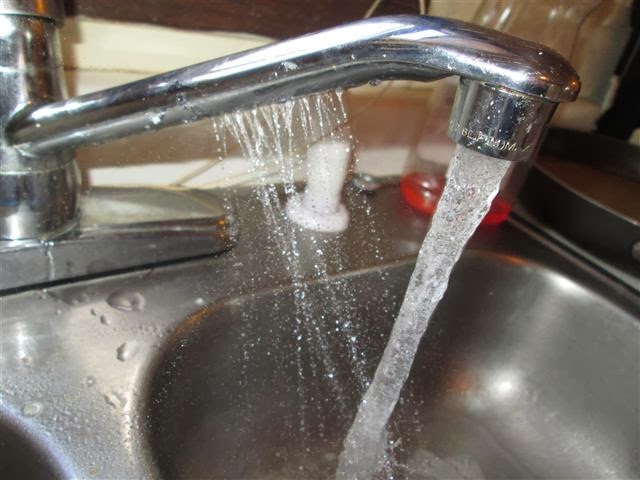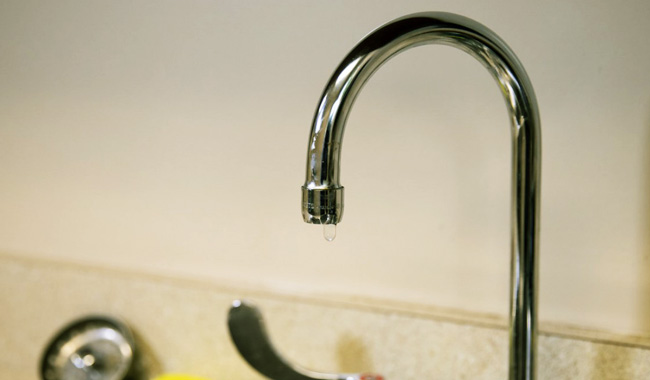Learning the Effects of a Leaky Faucet
Learning the Effects of a Leaky Faucet
Blog Article
Nearly everybody has got their private conception on the subject of Health Risks Posed by Leaking Faucets.

Introduction
A leaky tap may feel like a small aggravation, yet its effects expand much beyond the periodic drip. Recognizing the impacts of a leaky tap is critical for both property owners and the atmosphere. In this post, we'll check out the different effects of this common household issue and why addressing it quickly is vital.
Sources Of Leaky Faucets
Dripping taps can arise from a variety of factors, including deterioration, high water stress, and corrosion. Over time, the constant use of faucets can result in damaged seals and gaskets, creating leaks to develop. Additionally, too much water pressure can place pressure on plumbing components, causing leakages. Deterioration and corrosion can likewise deteriorate tap parts, making them vulnerable to leak.
Water Waste
One of one of the most significant repercussions of a dripping tap is water waste. Even a small drip can add up to gallons of drainage in time. This not just drives up water costs yet also contributes to water scarcity and ecological degradation. Addressing dripping taps without delay is critical for preserving this valuable source and reducing its impact on the earth.
Financial Influence
In addition to wasting water, leaky faucets can additionally have a significant financial influence. Increased water costs are a direct repercussion of water waste, costing homeowners hundreds of bucks every year. Moreover, the expense of repairing water damages caused by leakages can be significant, particularly if left unattended for a prolonged period.
Environmental Influence
The environmental influence of leaking taps prolongs beyond water waste. By preserving water, property owners can contribute to broader efforts to reduce water deficiency and shield natural ecological communities. Lasting alternatives such as rainwater harvesting and water-efficient fixtures can further lower the environmental footprint of household water use.
Technical Solutions
Innovations in technology have brought about the development of wise faucets and water-saving gadgets that help lessen water wastage. Smart faucets use sensors to detect activity and readjust water flow as necessary, minimizing waste without compromising ease. Water-saving tools such as aerators and low-flow showerheads are likewise efficient in saving water without compromising efficiency.
Global Viewpoints
While leaking taps might feel like a localized problem, they contribute to more comprehensive worldwide challenges such as water scarcity and climate modification. In areas currently facing water stress, every decrease counts, making leak avoidance and fixing essential. By adopting water-saving methods and investing in sustainable technologies, property owners can play their component in dealing with these pressing global problems.
Governing Measures
Federal government policies play an important function in mitigating the effect of leaking faucets and advertising water conservation. From constructing codes that call for water-efficient components to water-saving motivations and discounts, policymakers have a variety of tools at their disposal. By implementing and implementing these regulations, governments can ensure that homeowners prioritize water conservation in their lives.
Area Influence
Dealing with dripping faucets requires cumulative initiatives at the neighborhood degree. By elevating understanding about the value of water conservation and giving resources for leakage detection and repair service, local authorities can equip home owners to act. Campaigns such as water-saving rebate programs and leakage discovery projects can incentivize behavior modification and promote responsible water use.
Instance Studies
Real-life examples of the effect of leaking taps emphasize the significance of positive upkeep and timely repair work. From water damages to skyrocketing water bills, the effects of overlooking leakages can be extreme. By sharing these study, house owners can better understand the importance of dealing with dripping faucets promptly.
Educational Campaigns
Educational projects play a vital function in increasing understanding regarding the results of leaky faucets and promoting water conservation methods. Through workshops, workshops, and on the internet sources, house owners can learn exactly how to find and repair leakages themselves. By empowering individuals with expertise and devices, academic projects can cultivate a culture of accountable water use within neighborhoods.
Health Problems
Leaking taps can develop favorable atmospheres for mold and mildew and mildew growth, positioning health risks to occupants. The visibility of mold and mildew can worsen breathing concerns and allergies, particularly in prone individuals. Furthermore, water damages resulting from leakages can endanger the structural integrity of structures and lead to costly repair work.
DIY vs. Professional Repair service
When confronted with a dripping faucet, property owners often discuss whether to attempt repair services themselves or hire a specialist plumber. While DIY repairs can conserve money, they might not constantly address the underlying problem successfully. Expert plumbings have the expertise and tools to identify and repair leaks appropriately, making certain long-lasting services and comfort for house owners.
Safety nets
Stopping dripping taps needs routine maintenance and positive actions. Easy tasks such as replacing damaged washers and seals can protect against leakages from establishing. Additionally, upgrading to high-grade fixtures and minimizing water stress can aid lengthen the lifespan of faucets and decrease the risk of leakages.
Verdict
In conclusion, the impacts of a leaking tap expand far past the periodic drip. From water waste and raised water bills to health and wellness problems and ecological effect, the effects of ignoring leaks can be considerable. By resolving leaky faucets quickly and taking on water-saving techniques, home owners can minimize these impacts and contribute to a much more sustainable future.
Why You Shouldn’t Ignore a Leaky Faucet in Your Home
What Causes a Leaky Faucet?
Various factors can cause a leak, from loose and worn-out parts to corrosion. Your faucet has four essential components from which most plumbing issues will stem: the O-ring, the valve seat, the washer and the gasket.
What Is an O-Ring?
The O-ring is a stem screw that fastens parts of the faucet in place, preventing water from leaking out of the spout. Depending on your faucet type, the stem might have multiple O-rings. Water will drip from the faucet’s handles and base if this part breaks or deteriorates.
What Is a Valve Seat?
The valve seat controls the flow and temperature of the water. Found at the base of the handle, it works as a seal for the faucet’s stem. The valve seat ensures the water is allowed to flow or is blocked as the handles dictate. You’ll know it’s malfunctioning when water leaks from your faucet’s sides.
What Is a Gasket?
The gasket is found between the water inlet and the valve stem. It creates a seal between the faucet and the sink, holding its joints by aerators attached to the stem’s head. Water will trickle out from the base if the gasket isn’t working.
What Is a Washer?
The washer secures the handles and prevents leakage, serving a similar purpose to the O-ring. While the O-ring is ordinarily round and made from an elastic material, such as rubber, the washer is square-shaped and composed of brass, copper and other hard metals. If it malfunctions, corrodes or has been improperly installed, water will leak out of the handles, causing that incessant faucet drip.
Why Is a Leaky Faucet Dangerous?
A leaky faucet left alone for too long can have significant consequences.
Pest Infestations
Since bugs and rodents gravitate towards the scent of water, a leaky faucet will draw pests to your sink. Both are looking for leaks accessible through crawl spaces, which a faucet provides. If you leave water dripping for too long, you run the risk of an infestation.
Rust
If one of the faucet parts has started to corrode, the resulting rust can spread to your pipes and valves with startling speed. The rust might even lead to cracks or other impairments, resulting in more severe plumbing issues.
Your sink could also sustain damage from a leaky faucet. The water in your tap possesses sparse elements of calcium and iron that can stain your sink with repeated and prolonged exposure. Once those elements in the water have been open to the air for some time, your sink will start to rust, creating marks that can be difficult to remove.
https://www.tomsmechanical.com/blog/why-you-shouldnt-ignore-a-leaky-faucet-in-your-home

I have been very inquisitive about and I'm hoping you enjoyed reading our blog posting. Those who enjoyed our post kindly consider to share it. Thanks for taking the time to read it.
Report this page